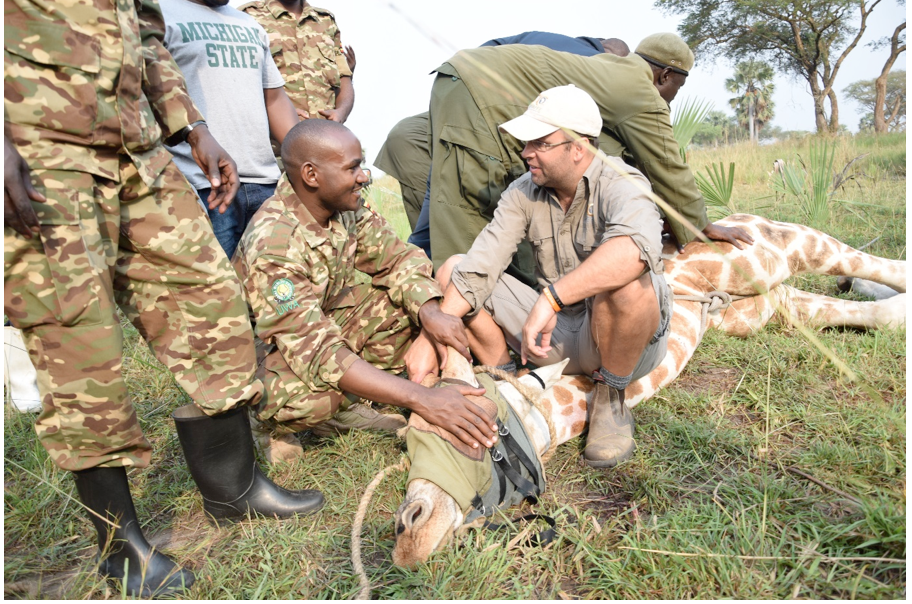Robert Aruho is an online MSc student in International Animal Health and a wildlife veterinarian for the Uganda Wildlife Authority (UWA) in Kampala. He has been working for three years on a project for the conservation of the Rothschild giraffe (a subspecies of the Northern giraffe). The Student had the chance to discuss the importance of his work and learn some more about this understudied species.
Giraffes were recently in the news following an inclusive genetic analysis that led to the discovery that what we thought was only one species made up of four different sub-species was actually four different species but, apart from that, not much attention is usually paid to this beautiful creature. Can you tell us a bit more about the Rothschild giraffe?
R: The Rothschild giraffe is one of four species of giraffe that has been recently enlisted on IUCN Red List as critically endangered with as little as 2,500 mature individuals remaining in the wild around the world. The Murchison Falls National Park in Uganda is a stronghold for the species as it accounts for about half of that total world population (~1,200). However, the risk of having such a geographically isolated population is that the high rates of inbreeding can lead to a genetic bottleneck and a subsequent loss of genetic diversity. Another issue the species is also facing is the shrinking of its home ranges as a result of human encroachment, associated with the increasing human population around the National Park.
Until very recently, very little attention was paid to the species and its extinction is often referred to as a silent extinction. What kind of initiatives are being taken in Uganda to aid the conservation of the species and what have you managed to achieve so far?
R: Thanks to a recent collaboration with the Giraffe Conservation Foundation we have been able to develop the research on the species and study these giraffes in order to better understand their ecology, diet and social dynamics. Such knowledge has enabled us to expand the population through translocation by moving them to other areas. So far for example, we have managed to successfully translocate 15 Rothschild giraffes from Murchison Falls National Park to Lake Mburo National Park, which is about 700 km away and another 18 to the South of the River Nile neighbouring the Murchison Falls National Park.
What is next and how can we help to improve the ongoing efforts to prevent the extinction of this majestic species?
R: We need more research in order to better understand this species. I am glad Dr. Julian Fennessy and his colleagues recently unravelled the mystery of the taxonomy of giraffes through their recent genetic study but publications on the species are very limited. There are still many unknown areas needing research such as the study of their health, behaviour and ecology. Going forward, we are developing a National Giraffe Conservation Strategy that will be a guide to conserving giraffes in Uganda. As a student, in addition to spreading awareness on the issue, we want to encourage you to think about research in giraffes that would help and contribute to the conservation of the species.
Image: Robert Aruho

